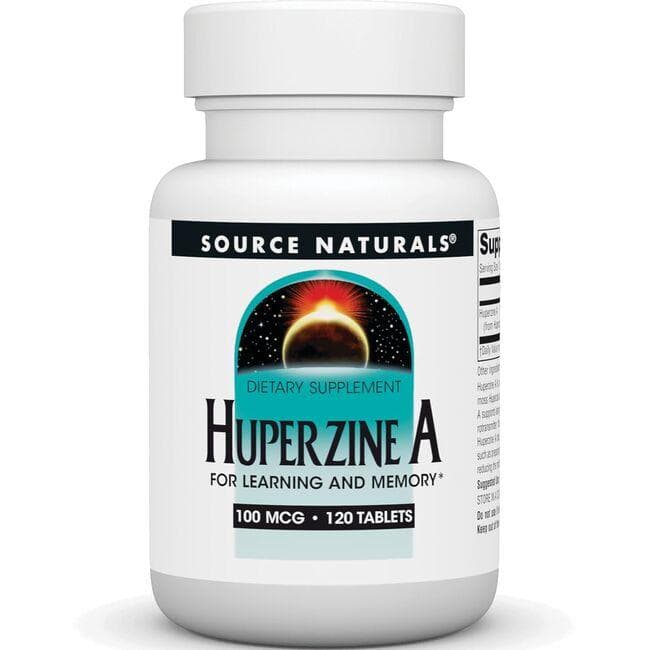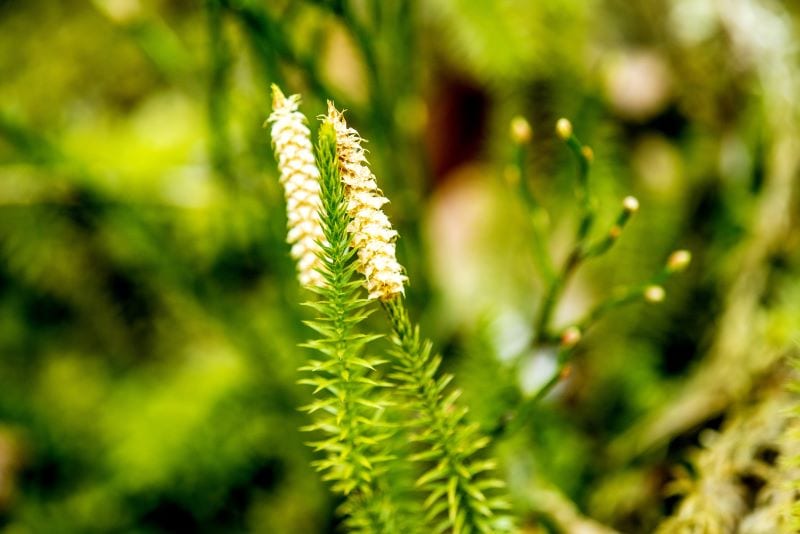Huperzine and Alzheimer’s disease research is showing it as a potentially viable treatment for Alzheimer’s disease (AD) and also a great memory-booster. It’s really called Huperzine A in the supplement world. Huperzine A comes from Chinese club moss (scientific name: Huperzia serrata) but can also be made in the laboratory these days.
China has used Huperzine A since they approved Huperzine A as a treatment for Alzheimer’s in the 1990s.
Huperzine A helps increase levels of acetylcholine which helps the brain make more brain cells. It increases BDNF (brain-derived neurotrophic factor), creating new brain cells and connections in the brain. This is pretty exciting stuff in the brain world.
Huperzine A and Alzheimer’s
 So far, the only Alzheimer’s “drugs” available are cholinesterase inhibitors, meaning they slow down the rate of acetylcholine breaking down. That’s how important choline is for our brains. There are many side effects to the current drugs as well, making them less than satisfactory for many people.
So far, the only Alzheimer’s “drugs” available are cholinesterase inhibitors, meaning they slow down the rate of acetylcholine breaking down. That’s how important choline is for our brains. There are many side effects to the current drugs as well, making them less than satisfactory for many people.
Huperzine A works exactly the same way, but it’s natural. It is approved and used as a treatment for AD in China, after having been discovered in the 1980s as a natural substance that could do exactly what they were looking for. Slow down the breakdown of acetylcholine.
And it’s more potent than donepezil, rivastigmine, and galantamine.
Acetylcholine – What It Is
Acetylcholine is a neurotransmitter, helping make the connections between nerve synapses. We can take a choline supplement to keep our levels up. Huperzine A helps keep the acetylcholine from being broken down and destroyed.
Related Article You May Like: Does Choline Help Prevent Dementia and Alzheimer’s?
Huperzine A Neuroprotective Properties

As mentioned earlier, Huperzine A increases BDNF in the brain, helping to grow new brain cells and making more connections between synapses. This is huge in the world of dementia and Alzheimer’s. In addition, Huperzine A helps prevent brain cell death. And, it is an antioxidant; very important for all of us.
Another feature of Huperzine A: it is anti-amyloid. In Alzheimer’s, amyloid proteins can accumulate and start choking off brain connects. Huperzine A helps control that.
So, in addition to helping grow our brains, it’s keeping the amyloid at bay.
With all that, scientists are researching Huperzine A as a new treatment for Alzheimer’s in the West.
In Dale Bredesen’s book, The End of Alzheimer’s, Huperzine A is mentioned as a supplement for memory, if other supplements he recommends aren’t giving the desired results.
Side Effects and Contraindications
 Huperzine A can slow heart rate so if you have heart issues, you should probably avoid taking Huperzine A. Rarely, some have experienced mild nausea, diarrhea, vomiting, blurred vision, restlessness. Some have experienced high blood pressure or twitching of muscles.
Huperzine A can slow heart rate so if you have heart issues, you should probably avoid taking Huperzine A. Rarely, some have experienced mild nausea, diarrhea, vomiting, blurred vision, restlessness. Some have experienced high blood pressure or twitching of muscles.
If you or a loved one are already taking a medication for Alzheimer’s then don’t take Huperzine A as it would add to the same effect as the medication.
Also, these medications for glaucoma and Alzheimer’s might cause interactions with Huperzine A so refrain from taking Huperzine A with pilocarpine (Pilocar and others), donepezil (Aricept), tacrine (Cognex), and others.
Do check with your doctor, as always.
Dosage
Several sources say 100 mcg is fine for boosting memory. For Alzheimer’s patients, it is typically 300-500 mcg daily.
Where We Are Now
Huperzine A is a natural over-the-counter supplement that shows promise as a treatment for Alzheimer’s disease. China is already using it as their treatment protocol for Alzheimer’s disease. Here is a link to check out Huperzine A from a reputable supplier:
I hope you enjoyed this article about Huperzine A and Alzheimer’s. Thank you for reading. I hope you look around mywellbrain.com for more information on brain health.
If you have any comments or questions, please leave them in the Comments section below. Thank you!
References:
Tsai, Shih-Jen Huperzine-A, a versatile herb, for the treatment of Alzheimer’s disease, Critical Care Medicine: October 2019 – Volume 82 – Issue 10 – p 750-751
doi: 10.1097/JCMA.0000000000000151




